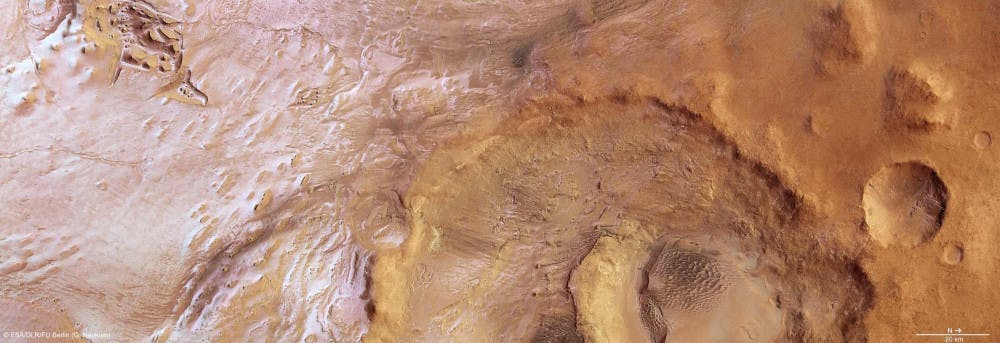“The big question is whether life ever formed on Mars,” said Jim Head, professor of geological and earth, environmental and planetary sciences. Head, along with University collaborators, examined the history of water activity in the Jezero Crater on Mars, finding evidence of two periods of water activity between 3.6 and 3.8 billion years ago when the crater was an active lake system.
The researchers’ paper on the topic was accepted for publication earlier this month by the Journal of Geophysical Research: Planets.
The Jezero Crater is of much interest for geological study because its geological timeline is known, and there are a variety of minerals present, said Jack Mustard, professor of earth, environmental and planetary sciences and a co-author of the paper.
In addressing the question of whether life ever existed on Mars, Mustard said that cannot yet be determined. “I don’t think we have the tools to ask that right now,” he said. But if life did exist on Mars, the Jezero Crater would have been a prime location, he added.
The study’s analysis of the crater’s geology indicated presence of deposits of limestone and clay minerals, which are the product of rocks given “enough water, time and temperature” to transform, Mustard said.
During the first period of water activity, there is evidence that water flowed below the Martian surface. During the second period of water activity, it appears water flowed across the Martian surface, carrying minerals created during the first period, Mustard said.
The two periods should be thought of as an “evolution” rather than a “time gap,” with a major event such as a volcanic eruption or meteorite strike causing the transition, Mustard said.
The research connects concepts together from other studies, tying “chronology to geology,” said Stephen Wood, research assistant professor of earth and space sciences at the University of Washington, who was not involved in the study. The paper is consistent with other evidence for episodic water activity on Mars, he said.
In the past, geologists thought a greenhouse gas atmosphere on Mars could have created high enough temperatures for liquid water to exist on Mars, but now it is generally believed that a different factor was necessary to increase surface temperature.
One theory is that there were high altitude glaciers on Mars that melted as a result of a meteorite strike and caused the second period of surface water to occur, said Stephen Clifford, a staff scientist at the Lunar and Planetary Institute.
Data for the paper was gathered using instruments on a craft orbiting Mars that record information about the entire planet, Mustard said.
Collecting data via an orbiter offers the ability to cover a larger surface area than a rover can trek, Mustard said. Since Mars has the same surface area of all of Earth’s land masses, orbiter data allows researchers to hone in on specific areas and readjust, unlike a rover which can only travel limited distances.
Some unique features of the crater include both inlet and outlet channels and two deltas, all of which trace from the second period of water activity, Head said.
The Jezero Crater is a potential landing site for the next Mars rover in 2020, Head added.
Follow-up studies could involve a rover landing and taking more specific measurements of the crater, including the possible existence of organic molecules, Head said.
Mustard described the field of geology as an experiment where the scientist doesn’t know the starting conditions but has to determine the sequence of events leading up to the outcome.
Wood noted that there may even be water on the surface of Mars today. Certain dark topological features on the Martian surface grow in length during warmer months, leading some scientists to believe the features contain water, he said.
“But no one has been able to definitively prove it’s water,” Wood said.





